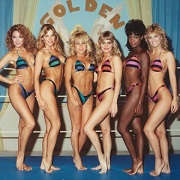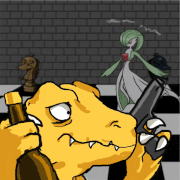|
When the Romans sent their embassy to China, how did they communicate with the Chinese? Did they pick up translators along the way and play a big game of telephone once they arrived at the Chinese imperial court?
|
|
|
|

|
| # ? Jun 4, 2024 01:27 |
|
Also the mesoamericans were really good at obsidian.
|
|
|
|
Communist Walrus posted:When the Romans sent their embassy to China, how did they communicate with the Chinese? Did they pick up translators along the way and play a big game of telephone once they arrived at the Chinese imperial court? There was a large amount of trading with both Rome and China in cities along the coasts of India, so there could certainly have been just a single interpreter needed to handle the situation, or only needing to have 2 or 3 people in between in total to handle going from Latin to a common subcontinent trade language to the correct Chinese dialects. Similar situations happened along the land trade routes so that you'd also need only a few people to handle the translation from Latin to Chinese and back. We don't however have specific details on how the communication was organized, so it's a matter of pure speculation. We just know there would be no need to have a particularly long list of languages involved.
|
|
|
|
The cloth armor had an interesting twist. They soaked the cloth in salt water brine then let it dry in the shade and apparently this crystallized it enough so it could be effective vs obsidian. Neat-o.
|
|
|
|
LingcodKilla posted:The cloth armor had an interesting twist. They soaked the cloth in salt water brine then let it dry in the shade and apparently this crystallized it enough so it could be effective vs obsidian. Neat-o. At least according to Last Days of the Inca and 1491, the conquistadors basically adopted native armor wholesale after the first conflicts. 1491 has a lot to say about the incredible cloth technology the Americans had and how some of it blew Europeans minds. They invented the suspension bridge, too.
|
|
|
|
FishFood posted:At least according to Last Days of the Inca and 1491, the conquistadors basically adopted native armor wholesale after the first conflicts. 1491 has a lot to say about the incredible cloth technology the Americans had and how some of it blew Europeans minds. They invented the suspension bridge, too. Yep. The only unambiguous military technological advantages the Spanish had were cannons, horses, and ships. An atlatl was every bit as deadly as guns of the era and the cloth armor was good enough most Spanish adopted it over metal, it was a lot more comfortable and the protection was fine. Communist Walrus posted:When the Romans sent their embassy to China, how did they communicate with the Chinese? Did they pick up translators along the way and play a big game of telephone once they arrived at the Chinese imperial court? Probably multiple translators. Latin or Greek -> an Indian language -> Ancient Malay or Vietnamese? -> some form of Chinese would be my guess. Direct Greek to Chinese wouldn't have been out of the question. The Greek kingdoms of central Asia lasted until 10 AD and there were certainly cultural Greeks in the area for centuries afterwards. I am certain there were Central Asian Greeks trading and living in China. Greek -> ancient Uighur ancestor language -> Chinese is another possibility. Chinese traders who spoke Greek would be possible, Greeks got around more than your mom. Grand Fromage fucked around with this message at 05:14 on Jul 10, 2019 |
|
|
|
Grand Fromage posted:Greeks got around more than your mom. The Asian Art Museum in San Francisco does a great job of contextualizing the interplay between Greek and various Asian cultures immediately as you walk in. I’d bet that traders speaking both some form of Greek and Chinese was pretty damned likely.
|
|
|
|
FishFood posted:Also the Inca to the South were a fully bronze society, bronze weapons and tools abound. Metal axes were the weapon of choice for the Inca soldier. Did I read something about the later Inca kingdoms fighting the Spanish with bronze grenades filled with captured gunpowder or was that a hallucination/memory of some sci-fi novel?
|
|
|
|
The Tocharian speakers were instrumental in the spread of Buddhism beyond India, and were neighbors with the Greek kingdoms, so while there’s no evidence, I’d put money on them being intermediaries.
|
|
|
|
Grand Fromage posted:Probably multiple translators. Latin or Greek -> an Indian language -> Ancient Malay or Vietnamese? -> some form of Chinese would be my guess. Direct Greek to Chinese wouldn't have been out of the question. The Greek kingdoms of central Asia lasted until 10 AD and there were certainly cultural Greeks in the area for centuries afterwards. I am certain there were Central Asian Greeks trading and living in China. Greek -> ancient Uighur ancestor language -> Chinese is another possibility. Chinese traders who spoke Greek would be possible, Greeks got around more than your mom. Also, those trading trips took time. Remember the sequence in The Thirteenth Warrior when Arab Guy picks up Norse on the journey. Yeah, it's a cheesy movie based on a gimmicky book, but that was done really well.
|
|
|
HEY GUNS posted:Cloth armor is extremely useful against things like arrows or swords. And also bullets: https://en.wikipedia.org/wiki/Myeonje_baegab
|
|
|
|
|
FAUXTON posted:Basically they ended up bartering so heavily in bronze axe heads that it became currency? When the western bronze age had it's collapse, bronze axe heads *were* the currency. Nobles and kings were getting buried with dozens of them. right at the point the trade and kingdoms all disintegrated simultaneously.
|
|
|
|
FAUXTON posted:Basically they ended up bartering so heavily in bronze axe heads that it became currency? Well, yes. All of the other explanations for why the Mesoamericans flubbed bronze are terrible. I think it came down to a bad choice in currency. Gold is a wonderful choice precisely because it is rare and so incredibly useless. But copper and tin are important, precisely because they make bronze, and they do it at temperatures that even simple groups of humans can manage to scrape together. Unfortunately, copper and tin were the entry level "good" currency in pre-Columbian Mesoamerica. Everything underneath them (cacao beans, feathers, other soft barter goods) was essentially perishable. The only thing over them was gold. So moderate levels of trade defaulted to copper/tin, pricing out anyone who just wanted to melt them together and make a better tool. physeter fucked around with this message at 13:59 on Jul 10, 2019 |
|
|
|
Zopotantor posted:Also, those trading trips took time. Remember the sequence in The Thirteenth Warrior when Arab Guy picks up Norse on the journey. Yeah, it's a cheesy movie based on a gimmicky book, but that was done really well. Yeah. I suspect a lot of it was people learning enough to get by. You can learn enough language to have a basic conversation pretty fast, especially if you are motivated and have a lot of time to devote to it. At that point improvement via conversation happens pretty quick. Obviously our hypothetical Roman envoy isn’t going to be composing Classical Chinese poetry any time soon but enough to make it clear where they’re from, who they represent, and that they would like to trade isn’t a huge lift. poo poo also works in the other direction. The MO for conquistadores was to basically kidnap a local and teach them Spanish then use them to talk to everyone else. Look up La Mainche. She was one of Cortez’s main translators. Iirc she was tri-lingual: a maya woman who was captured by the Aztecs and learned Nuahatal while living with them. She met a ship wrecked Spaniard while an Aztec slave, picked up some Spanish, then learned more when she was given as a gift to Cortez as part of a peace settlement with some Maya he defeated soon after landing. So, yeah. Basically all those stories you hear about someone moving to the US and learning English by watching daytime TV then just raw immersion over a few years (which does happen - my wife’s best friend is one such person). Anecdotally I can also say I learned more German in a year of being a bar fly in Berlin then 4 years of university study.
|
|
|
|
The problem I have with that explanation is that the Aztecs used coco beans for currency and would still every so often crush them up and drink them. Although I suppose it feels better to blow your money on a crazy party than just because you need a better hammer. And surely the metal must've at least seemed rare, otherwise people would've been counterfeiting all over the place.
|
|
|
|
It seems like an adequate partial explanation but you'd still need a general shortage of bronze otherwise the currency would deflate and it would become economically viable to make things out of pennies again.
|
|
|
|
|
SlothfulCobra posted:The problem I have with that explanation is that the Aztecs used coco beans for currency and would still every so often crush them up and drink them. They weren't the only form of currency though. They were sort of used like small change afaik. We think of small change the same today- yes it is money and we will spend it, but also, we often don't think twice about using it in craft projects or losing it or throwing it away, whereas we would absolutely care if a twenty went missing.
|
|
|
|
What might have happened is population growth (or currency usaging growth) grew faster than bronze production did - If there's more demand for money but the production is flat, then you'll get inflation, and the price can inflate away from value as a tool. Does seem weird though.
|
|
|
|
|
SlothfulCobra posted:The problem I have with that explanation is that the Aztecs used coco beans for currency and would still every so often crush them up and drink them. I've read that the approximate value of one copper "axe" was equal to 8,000 cacao beans. Assuming you needed 4 little copper axe heads and 1 of tin to make a decent sized bronze tool, you just melted approximately 35,000 in cacao value. Or, you could just trade a couple beans to a flint chipper for a way shittier tool. Keep in mind that bronze isn't magic, the bronze tool will still break or be worn away to nothing by the normal ablative process of its use. You stick with the flint chipper.
|
|
|
|
It's deflation that would turn the tool too valuable to use instead of exchange for other goods. Inflation would reduce the value of the tools as money.
|
|
|
|
physeter posted:Well, yes. All of the other explanations for why the Mesoamericans flubbed bronze are terrible. I was looking at the wikipedia link Alhazred posted and uh I think you might be going too far, it's clear that by 1500 Mesoamerica was in full on bronze age and bronze was being used regularly for menial and practical tasks as well as trade. It has a bunch of pictures of real, practical bronze axes as well as the money form.  left side: bronze "money," rightside: practical real ax heads from the National Museum of Anthropology in Mexico City. The article is poorly sourced but suggests bronze tools were in every day use, it references a story in which a women was given an ax to split firewood, only instead to take it and go fight the Spanish. It also suggests bronze was not particularly scarce, saying they were regularly given as part of a marriage dowry. Pre-Colombians also had access to silver and jade, which would have been intermediate in value between bronze and gold. It seems clear to me that Mesoamerica was clearly in the bronze age. The fact that they still often used stone tools does not contradict this. Nowhere did bronze completely replace stone tools overnight. As Koromei discussed with regards to China, stone tools were often used alongside bronze for many centuries. It wasn't until iron became available that metal really took over for all practical purposes in most of the world. We have great evidence of this in Egypt, where we have found large scale industrial flint mines that were used all the way up into the New Kingdom, even as bronze became increasingly common. Squalid fucked around with this message at 16:34 on Jul 10, 2019 |
|
|
|
welp so much for that theory
|
|
|
|
I'm trying to remember an anecdote from one Roman emperor that I picked up from an audiobook of Gibbons' stuff. It was something to the effect of there being an emperor trying to determine his successor and not having any good choice from his own family. He had come to really favor some very competent guy that he wanted to just outright adopt and make his successor. That guy's father apparently didn't even like this son so much. In fact, he hated him so much that after he came back from a successful campaign, he strangled his son to death. Patriarchal laws as they were, the emperor couldn't do anything about it, and some shithead took control when he ultimately died. Is this familiar to anybody?
|
|
|
|
It's a shame that jade tools seem to rarely have been used pratically. It is insanely tough stuff after all, but of course that also makes it a pain to shape in the first place. At least the Olmecs had their heads screwed on straight wrt jade appreciation.
|
|
|
|
I also think it is worth pointing out that the whole idea of a linear progression of material use checkpoints for civilization (Stone Age > Bronze Age > Iron Age) doesn't really apply in Mesoamerica. There's a really ugly history of writing them off as "Stone Age," when in fact their accomplishments were spectacular.
|
|
|
|
physeter posted:welp so much for that theory I mean as far as I can tell everything you said was basically true. It's just that what we are accustomed to thinking of as Eurasian bronze age societies were often very similar to how you described Mesoamericans and their relationship with bronze. We talk about the bronze age in Eurasia as if it was a big break from the preceding stone age, but in reality it took hundreds of years and the changes would have been hardly perceptible to those living through it. While in the 16th century the use of bronze was still beginning to spread and develop in Mesoamerica, the Spanish conquest marks a sudden and dramatic break with the past that totally overshadows whatever evolutionary technological changes immediately preceded it. Whenever we talk about epocs like the industrial age or information age, we always have to keep in mind that these are simplifications used for the sake of convenience, rather than rigorous analytical tools. The boundaries we define for them are almost always arbitrary and only identifiable in hindsight.
|
|
|
|
Communist Walrus posted:When the Romans sent their embassy to China, how did they communicate with the Chinese? Did they pick up translators along the way and play a big game of telephone once they arrived at the Chinese imperial court? almost definitely some crafty sogdians
|
|
|
Cessna posted:I also think it is worth pointing out that the whole idea of a linear progression of material use checkpoints for civilization (Stone Age > Bronze Age > Iron Age) doesn't really apply in Mesoamerica. There's a really ugly history of writing them off as "Stone Age," when in fact their accomplishments were spectacular. One of the conquistadors wrote down an account about what he saw and he's just constantly amazed about how advanced the aztecs were.
|
|
|
|
|
I read an interesting thing in The Viking Age by Robert Ferguson that the terms stone age, bronze age, and iron age were invented by a Scandanavian archaeologist who was handed a giant pile of artifacts. He sorted them by material at first and then realized that by doing that he had inadvertently sorted them roughly by age as well. His book on the subject popularized the terms.
|
|
|
|
Alhazred posted:One of the conquistadors wrote down an account about what he saw and he's just constantly amazed about how advanced the aztecs were. Yeah. If you read all the earliest accounts of the Americas, the Europeans are loving floored with how amazing everything is and how many people there are and all these giant cities. Then it goes post-apocalyptic.
|
|
|
|
What's stuff that particularly impressed them? Artifacts, organizational stuff, anything.
|
|
|
|
One thing that comes up a lot is just how big the urban areas are. De Soto's mission talks about how the rivers are one endless city for days and days of travel, there's a similar one for the Amazon. Here's Cortes on Tenochtitlan:quote:This great city of Tenochtitlan [Mexico] is situated in this salt lake, and from the main land to the denser parts of it, by whichever route one chooses to enter, the distance is two leagues. There are four avenues or entrances to the city, all of which are formed by artificial causeways, two spears' length in width. The city is as large as Seville or Cordova; its streets, I speak of the principal ones, are very wide and straight; some of these, and all the inferior ones, are half land and half water, and are navigated by canoes. All the streets at intervals have openings, through which the water flows, crossing from one street to another; and at these openings, some of which are very wide, there are also very wide bridges, composed of large pieces of timber, of great strength and well put together; on many of these bridges ten horses can go abreast. Foreseeing that if the inhabitants of this city should prove treacherous, they would possess great advantages from the manner in which the city is constructed, since by removing the bridges at the entrances, and abandoning the place, they could leave us to perish by famine without our being able to reach the main land--as soon as I had entered it, I made great haste to build four brigantines, which were soon finished, and were large enough to take ashore three hundred men and the horses, whenever it should become necessary.
|
|
|
|
Population, and the subsequent lack of itBartolemé de las Casas posted:America was discovered and found out Ann. Dom. 1492, and the Year insuing inhabited by the Spaniards, and afterward a multitude of them travelled thither from Spain for the space of Nine and Forty Years. Their first attempt was on the Spanish Island [Hispaniola], which indeed is a most fertile soil, and at present in great reputation for its Spaciousness and Length, containing in Circumference Six Hundred Miles: Nay it is on all sides surrounded with an almost innumerable number of Islands, which we found so well peopled with Natives and Forreigners, that there is scarce any Region in the Universe fortified with so many Inhabitants: But the main Land or Continent, distant from this Island Two Hundred and Fifty Miles and upwards, extends it self above Ten Thousand Miles in Length near the sea-shore, which Lands are some of them already discover'd, and more may be found out in process of time: And such a multitude of People inhabits these Countries, that it seems as if the Omnipotent God has Assembled and Convocated the major part of Mankind in this part of the World. You could probably pull up stuff from the Aztec and Inca conquests that sounds more impressed with material culture — the Taino didn’t have anything nearly as impressive as those states going on.
|
|
|
|
aphid_licker posted:What's stuff that particularly impressed them? Artifacts, organizational stuff, anything. Consider: - Their capital (Tenochtitlan) had roughly double the population of contemporary European capital cities (London, Paris, Rome). - They used hydrological engineering that let them build advanced aqueducts and artificial islands. - They had public sanitation services. And more, that's just a quick response. They also had mandatory public education up to age 15, sophisticated knowledge of medicine, state-run academia with poets and philosophers ("tlamatini"), women's rights, (some) elected rulers, and many other less immediately obvious achievements. (Edit: I see I was too slow.) Cessna fucked around with this message at 22:29 on Jul 10, 2019 |
|
|
|
Women’s rights is a bit of a stretch. Aztec society treated women better than some contemporary European societies in some ways, but they were broadly shut out of political power in just the same way and with just the same ambivalence and exceptions (son/husband is someone important). Very fun article about women’s status in among the skasion fucked around with this message at 22:32 on Jul 10, 2019 |
|
|
|
side note: trying to look up bronze age stone tools is extremely frustrating. Tons of throw away references like "flaked stone tools were found in great quantity at one New Kingdom work camp," or "Royal Shang dynasty tombs frequently contain bronze and stone farming implements," or "most tools continued to be made from stone or clay in Babylonia until the Akkadian period," but zero elaboration or pictures. The best article I could find was from an archaeologist specialized in North American Indians complaining that nobody study lithic technology in bronze age Asia, which yeah, seems accurate.
|
|
|
|
Extremely cool, thanks guys
|
|
|
|
Rocks aren’t sexy
|
|
|
|
skasion posted:Women’s rights is a bit of a stretch. Aztec society treated women better than some contemporary European societies in some ways, but they were broadly shut out of political power in just the same way and with just the same ambivalence and exceptions (son/husband is someone important). Very fun article about women’s status in among the Entirely fair, agreed.
|
|
|
|

|
| # ? Jun 4, 2024 01:27 |
|
Cessna posted:- Their capital (Tenochtitlan) had roughly double the population of contemporary European capital cities (London, Paris, Rome). I think the highest estimates for the population of Tenochtitlan is about 200,000, about the same size as Paris. Lately, though, a bunch of people have been revising that downward, with low estimates, of about 75,000.
|
|
|














































